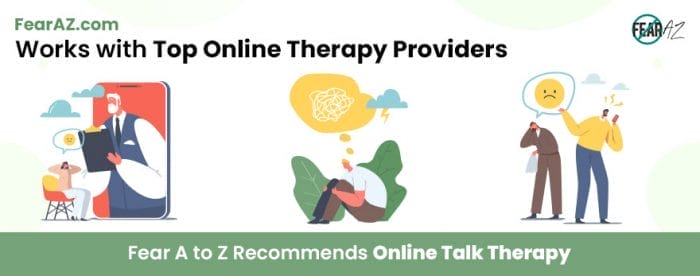Share This Article
Fear of Short People: Achondroplasiaphobia
Does dreaming about the dwarfs in Snow White and the Seven Dwarfs cause you to wake up in a cold sweat?
What feeling do you get when seeing little people? Is it fear, anxiety, disgust, or a mixture of all three?
Do you move in the opposite direction at the first sight of short people? Well, don’t worry, you’re not alone.
You may be wondering if achondroplasiaphobia is a common phobia. The truth is, it’s as common and prevalent as any other phobia. Fear of little people can be debilitating, but there are ways you can overcome it.
First, let’s try to understand why you fear short people. What is it about them you are afraid of? What triggered this fear? Once you know what’s causing your fear, it will become easier to overcome it.

Achondroplasiaphobia Is a Legitimate Fear
There are many names for the fear of short people, or achondroplasiaphobia, such as lollypopguildophobia and nanosophobia. It can start as a mere discomfort at the sight of dwarfs and go on to become a full-blown anxiety disorder. People experiencing midget phobia refuse to visit shopping malls, circuses, fairs, casinos, and any place where they might encounter a small person.
Many are not even aware that a phobia of midgets exists, and so they believe that those with achondroplasiaphobia are simply rude to short people. Lindsay Lohan is one actor who is known to fear dwarfs.
The technical term for fear of short people, achondroplasiaphobia, comes from the medical term “achondroplasia,” a disorder of the skeletal system. This disorder causes stunted growth, which leads to dwarfism.
What Causes Achondroplasiaphobia?
Stereotypical Notions
Many times, achondroplasiaphobia stems from the stereotypical movies and books which depict dwarfs in unconventional ways. Let’s take Snow White and the Seven Dwarfs for instance.
Although the seven dwarfs are kind and loving, books and movies portray them to be living in forests isolated from society. Such depictions can mislead people and establish incorrect notions about those who are shorter than average.
Traumatic Childhood Experiences
Fear of little people can also occur because of traumatic experiences during one’s childhood. For example, children might have had encounters with dwarfs who mistreated them.
Superstitious Beliefs
Many who have a fear of small people believe that dwarfs are aliens from different planets. This belief comes from the concept of referring to martians as “little green dwarfs.”
Mental Health Disorders
The phobia of dwarfs is also associated with other mental health disorders, such as anxiety and ADHD.
Perceptions
In the eyes of many, dwarfs appear abnormal due to their disproportionately large faces, short stature, and hunched backs.
Achondroplasiaphobia Symptoms
Achondroplasiaphobics may experience the following physical symptoms:
- Dry mouth
- Fast and irregular breathing
- Disturbed sleep due to nightmares about dwarfs
- Increased sweating
- Hysterical screaming
- Wanting to flee at the sight of dwarfs
- Physical discomfort at even the slightest mention of dwarfs
Achondroplasiaphobics may also experience the following mental and emotional symptoms:
- Repeated anxiety attacks
- Intense, crippling fear
- A sense of guilt from being accused of being rude to dwarfs
What Can You Do to Help Yourself Overcome Achondroplasiaphobia?
Educate Yourself
The first step to overcoming this fear is to educate yourself about short people. Dwarfism is a medical condition with genetic predispositions. Height does not determine character. Not all dwarfs are evil, in the same way that not all men of average stature are good.
Talk to A Friend
Talk to someone you trust. Having them listen to your fears will help alleviate them. If you aren’t able to talk, write down your emotions on a piece of paper.
Lifestyle Changes
In case you experience repeated panic attacks, a few lifestyle changes may help. These changes include regular exercise, a balanced diet, smoking cessation, and cutting down on alcohol consumption. There are many breathing exercises and relaxation techniques you can follow as well to help you cope better with your anxiety.
Support Groups
Putting yourself out there and attending support groups is beneficial. Support groups will help you feel that you’re not the only one living with this phobia. You can also join online support groups if you don’t want to leave your home.
Self-Help Resources
Use the various self-help resources available on the internet. Different authors have written numerous books on how to cope with phobias. Also, some organizations conduct courses for specific phobias; you can look them up, too.
Seek Help From Professionals
If self-help is not enough to ease your anxiety about short people, the next step is to seek help from a mental health professional. Trying to cope with this phobia alone can be difficult. It is so much easier if you receive help from a certified therapist.
Professional Help to Overcome Your Achondroplasiaphobia
Cognitive Behavioral Therapy
Cognitive Behavioral Therapy (CBT) is one of the professional tools therapists use for achondroplasiaphobia treatment. CBT gradually changes the way you think about a situation. You’ll take short steps to overcome your fear. Your therapist will help you identify patterns, correlate your thoughts with your behavior, and gradually help you change the way you think. They’ll also provide you with exercises that will aid in the process.
Exposure Therapy
As the term suggests, exposure therapy is all about gradually exposing you to situations that you fear. Don’t worry, the therapy will take place in a safe and controlled environment. For instance, you may be asked to read about dwarfs, look at pictures of dwarfs, sit near a dwarf, and gradually, when you’re comfortable, you’ll be able to talk with one.
Through exposure therapy, you’ll begin to have more control over your fear. This method of treatment can also be carried out using virtual tools. However, this is still at its testing phase.
Hypnotherapy
Hypnotherapy involves putting patients in a state of hypnosis or deep relaxation. This allows the therapist to understand your subconscious thoughts, memories, and fears. All of these will later be dealt with individually. Be sure to seek out state-licensed and accredited therapists.
Eye Movement, Desensitization, and Reprocessing
This method of therapy is used for those whose fear is related to a traumatic incident in the past. Your therapist may ask you to visualize a fearful circumstance while you use eye movements to calm your responses. This aids in desensitizing traumatic memories. Gradually, you’ll be given real-life exposure to help you overcome your fear.
Should You Avoid Your Fear?
Avoiding your fears will only make them worse. The best thing to do is to seek help as soon as possible. In the meantime, if a situation becomes overwhelming, think of the present rather than the steps you need to take in the future. The following are a few things you can do when you’re feeling overwhelmed.
Take Some Time Out
Take steps to calm yourself in the midst of a fearful situation. Physical exercise and breathing techniques will help you do this.
Visualize Your Happy Place
Close your eyes and imagine being in a place where you feel safe, happy, and calm. You can imagine cuddling with your puppy or hugging your best friend. Let your positive emotions come to the surface.
Look at the Evidence
It helps to challenge your fears by collecting evidence. How many dwarfs do you know who are dangerous? By thinking logically, you’ll be able to fight your fears.
Trust Yourself and the Process
Understand that you are not alone. With the right help, overcoming your fear will not be as scary as it seems. Trust yourself, your therapist, and the process. It’s time you put your fear of short people to rest.




